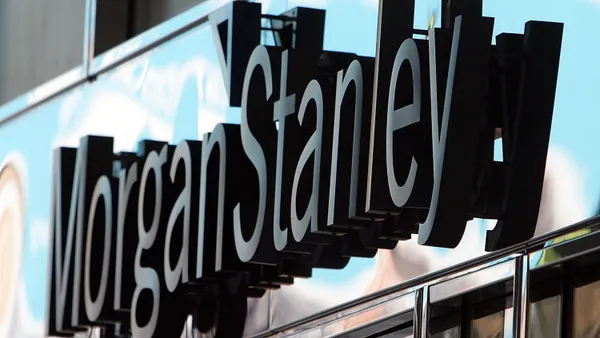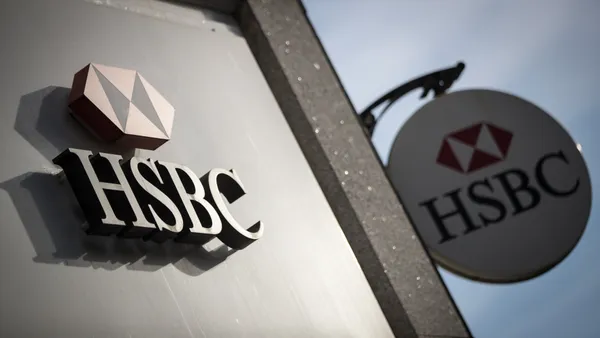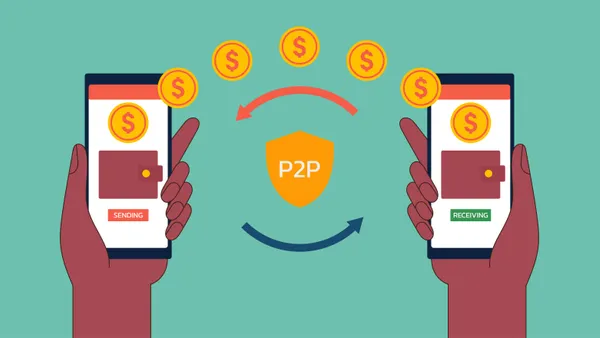Dive Brief:
- Community banks increased their lending to small businesses by 40% in the 12 months that ended in June, according to a survey of 396 bankers published last week to coincide with a conference held by the Federal Reserve, Conference of State Bank Supervisors (CSBS) and Federal Deposit Insurance Corp. (FDIC). Community banks processed at least 37% — or $196 billion — of Paycheck Protection Program (PPP) funds, the survey found.
- About 34% of survey respondents cited "business conditions" as the greatest challenge they faced throughout the year. Presumably, that category encompasses not only the coronavirus crisis, but other hurdles predicated by it. About 7% of respondents cited "business conditions" as a primary concern in 2019's survey.
- Core deposit growth, the leading challenge for 23% of respondents last year, appeared to be much less of a concern in 2020 (9%). Deposits increased 33% to $659 billion for the year ending in June, the survey found. That mirrors an industrywide swell in deposits.
Dive Insight:
Despite the 40% jump in small-business loans that PPP heralded, a number of respondents expressed frustration with the program's process — and with its overseer, the Small Business Administration (SBA).
"The challenges that we experienced [in PPP] are too numerous to list," one banker said. "It was and continues to be the most frustrating, ill-planned, wrongly directed and misunderstood program that the federal government could have possibly created." Respondents cited a "horrific" rollout, "ever-changing" rules and SBA website access "nightmares."
Others found a silver lining. "Despite a rollout that was disjointed and frustrating," one banker said, "we were able to support our small business customers." Another cited the chance to help borrowers whose primary lender — sometimes a larger or nationwide bank — couldn't help them, saying that making these loans helped fill a "huge gap in our community."
About 77% of surveyed banks said they offered, and planned to continue offering, SBA loans. That's up from 67% last year, according to the survey. However, about 8% said they planned to stop offering SBA loans — double the percentage from 2019. Referencing PPP, one banker expressed "disappointment" that "we ever agreed to participate in a program where the terms we must live by were changed midstream."
The coronavirus's shadow spread across more of the survey than just the portion on PPP. About 70% of surveyed banks implemented a work-from-home policy for nonessential staff in response to the pandemic. Nearly half (47%) increased paid or unpaid sick leave or family leave for their employees. About 3% increased staff in response to the pandemic, but about 5% shrunk their headcount.
The number of total full-time equivalent employees dropped by 4% from June 2019 to June 2020, the survey found. By comparison, noncommunity banks increased their number of employees by 1% over the same period, according to the FDIC. Community banks cut 9,900 full-time equivalent jobs in the second quarter, the regulator found.
About 23% of banks closed branches, at least temporarily, the survey found, although there was no indication how many closures are permanent. Throughout the banking industry as a whole, by comparison, 1,565 branches were closed through August 2020, compared with 1,874 for the same period last year, according to the FDIC. That's a 16% decline.
One of this year's developments that reflects a stark contrast between community banks and their national cohorts is in current expected credit loss (CECL). While big banks have set aside billions of dollars in expected loan loss reserves, 11% of surveyed banks said they had to boost their reserves to comply with the accounting standard. Altogether, community banks increased provisions for loan losses from $1.4 billion in the last quarter of 2019 to $3.2 billion in the first quarter of 2020 and to $3.4 billion in the second, the survey found.
Acquisition activity slowed, too, amid the pandemic. Less than 10% of banks reported receiving acquisition offers, while 13% said they made acquisition bids, according to the survey. That's down from 14% and 25% last year. But analysts have said they expect consolidation trend to pick up again when the pandemic loses momentum.
Michael Stevens, senior executive vice president of the CSBS, told American Banker that, in terms of adopting new technology, "it seems like the industry kind of stood still." If anything, the survey showed that bankers made different priorities this year.
About 40% of surveyed bankers said market competition was a "very important factor" in core deposits this year, compared with 54% in 2019. As concern over deposits abated, so, too, did worries about liquidity risk. About 45% of bankers labeled that factor "important" or "very important" in this year's survey, compared with 58% in 2019.
Nearly 57% of bankers considered credit risk to be "very important," a 12-percentage-point jump from last year. PPP rule changes that one banker said "adds risk to the banks and removes risk from the SBA after the loans have been made" may have colored this perspective.
"I believe the way we deliver our services will look totally different," one surveyed banker said. "But it is yet to be determined."













